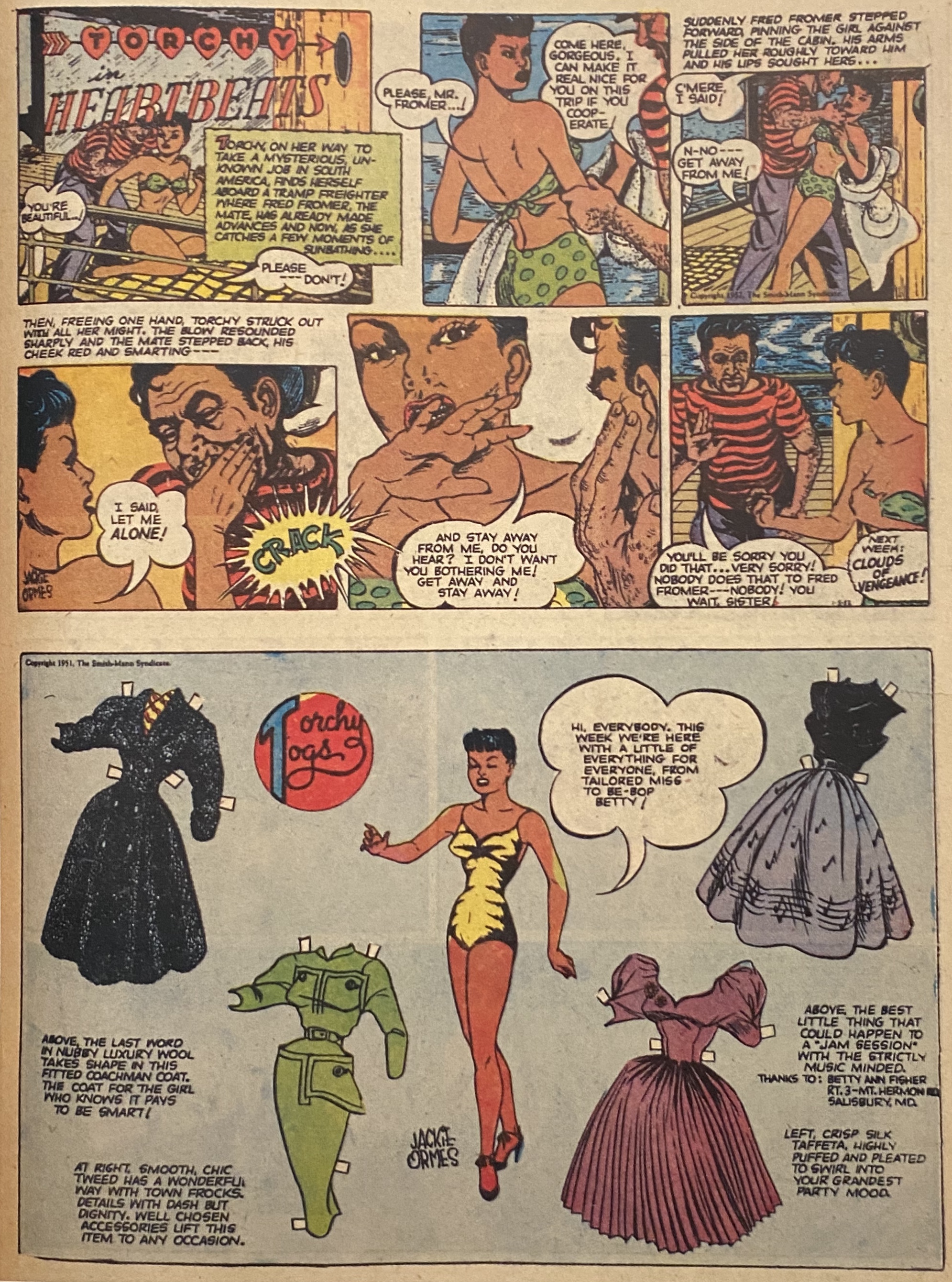In her comics, Jackie Ormes also broke barriers in women's rights, having her story lines revolve around strong female characters.
In the 1930s, a woman’s traditional role was that of “homemaker”, not in the workplace. Not only that, but there were also high expectations on how they should look and dress. Knowing this, Ormes broke barriers by deciding to create her character, Torchy, as the opposite of what society expected women to be; she was adventurous, strong-willed, and did what she wanted. Additionally, her adventures did not include her finding her true love, which was a common theme in entertainment during this time. She also made Torchy’s adventures relevant to current events, such as the Harlem Renaissance and the Great Depression.
In the comic strip below, which is part of the Torchy in Heartbeats comic series, Ormes broke barriers by addressing the rarely-spoken topic of sexual harassment. In this comic strip, a man makes unwanted advances towards Torchy. Not only does Ormes break barriers in this comic by showing the fear, thoughts, and struggles Torchy faces in that situation, but she also has Torchy fight back, showing her as an admirable role-model.

Torchy in Heartbeats. January 5, 1952. Source: Jackie Ormes: The First African American Woman Cartoonist by Nancy Goldstein
Attached to her Torchy in Heartbeats comic strips, Torchy Togs gave readers of all ages a way to engage in Torchy’s adventures by cutting out the Torchy paper-doll and her outfits and then dressing her up. Not only did Ormes design, draw, and detail these outfits by hand, she broke barriers by having the Torchy character posed in undergarments, which, at the time, was viewed as “provocative.” Even though other comic artists also had paper dolls along with their comics, Ormes was the first to have the paper doll be an African-American character.